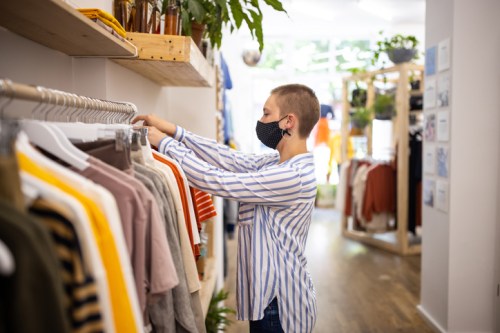‘I’m an Epidemiologist, and This Is What It Means When COVID Cases Are Up—But Deaths Remain Low’
An epidemiologist speaks to COVID-19's path to becoming an endemic, and why that means more cases, but less deaths.

Over two years into the pandemic, COVID-19 is still evolving. If you’ve tuned in to the news lately, you may have heard that, while COVID-19 cases and hospitalizations are on the rise, deaths remain relatively low. At first blush, that seems counterintuitive, right? So we asked Jyotsna Shah, PhD, president of COVID-19 lab IGeneX, Inc, to give us the rundown.
Experts in This Article
infectious disease expert
First, a little context about where we stand with COVID-19: The Center for Disease Control and Prevention (CDC) reported that cases and hospitalizations were on the rise last week. And while over 50 percent of Americans now live in communities with relatively low levels of COVID-19 infection, many places are now seeing medium to high levels of the virus. The current 7-day mortality average, based on data from May 20, has decreased about 1.2 percent compared to the previous week.
That data tells an interesting, but unpredictable story, according to Dr. Shah. COVID-19 is on its course to become an endemic, or a disease that’s consistently present in a population or geography, and these variations are part of its journey to getting there. “The trajectory of a virus such as COVID-19 can change quickly. However, often as viruses become more contagious, they become less deadly,” she says.
“Viruses mutate, and the hope is, that with increased levels of protection and over a longer period of time, COVID-19 will become less of a deadly presence. However, it may never disappear.” — Jyotsna Shah, PhD, President of COVID-19 lab IGeneX, Inc
Still, Omicron BA.2 is a highly-contagious offshoot of Omicron that’s now considered the predominant COVID-19 variant. “While we’re still learning more about the variant, studies have shown that it is more transmissible than other forms of COVID-19,” Bernadette Boden-Albala, MPH, DrPH, director and founding dean at the University of California, Irvine Program in Public Health, previously told Well+Good. And as Anthony Fauci, MD, told ABC News, cases of BA.2 do not appear to be more severe than previous strains of the virus.
However, this doesn’t mean it’s time to let our guards down. “While the numbers may never reach what they were, they are by no means static. We will continue to see rises and falls in the years to come,” says Dr. Shah. “Viruses mutate, and the hope is, that with increased levels of protection and over a longer period of time, COVID-19 will become less of a deadly presence. However, it may never disappear.”
Keeping yourself safe as we head into the third summer of COVID-19 involves going back to the basics. “Firstly, make sure that you receive a vaccine and boosters. This is the first line of defense and will prevent transmission, as well as limit severe symptoms should you contract a breakthrough case,” Dr. Shah says. You should also continue to social distance, opt to hang out in large groups outside and mask up (regardless of your vaccination status).
There may come a day when COVID-19 is endemic—much like the flu or malaria (both of which still claim many lives each year). For now, though, it’s worth being attentive and remembering that every safety measure you take helps yourself and your community.
Oh hi! You look like someone who loves free workouts, discounts for cutting-edge wellness brands, and exclusive Well+Good content. Sign up for Well+, our online community of wellness insiders, and unlock your rewards instantly.
Sign Up for Our Daily Newsletter
Get all the latest in wellness, trends, food, fitness, beauty, and more delivered right to your inbox.
Got it, you've been added to our email list.










